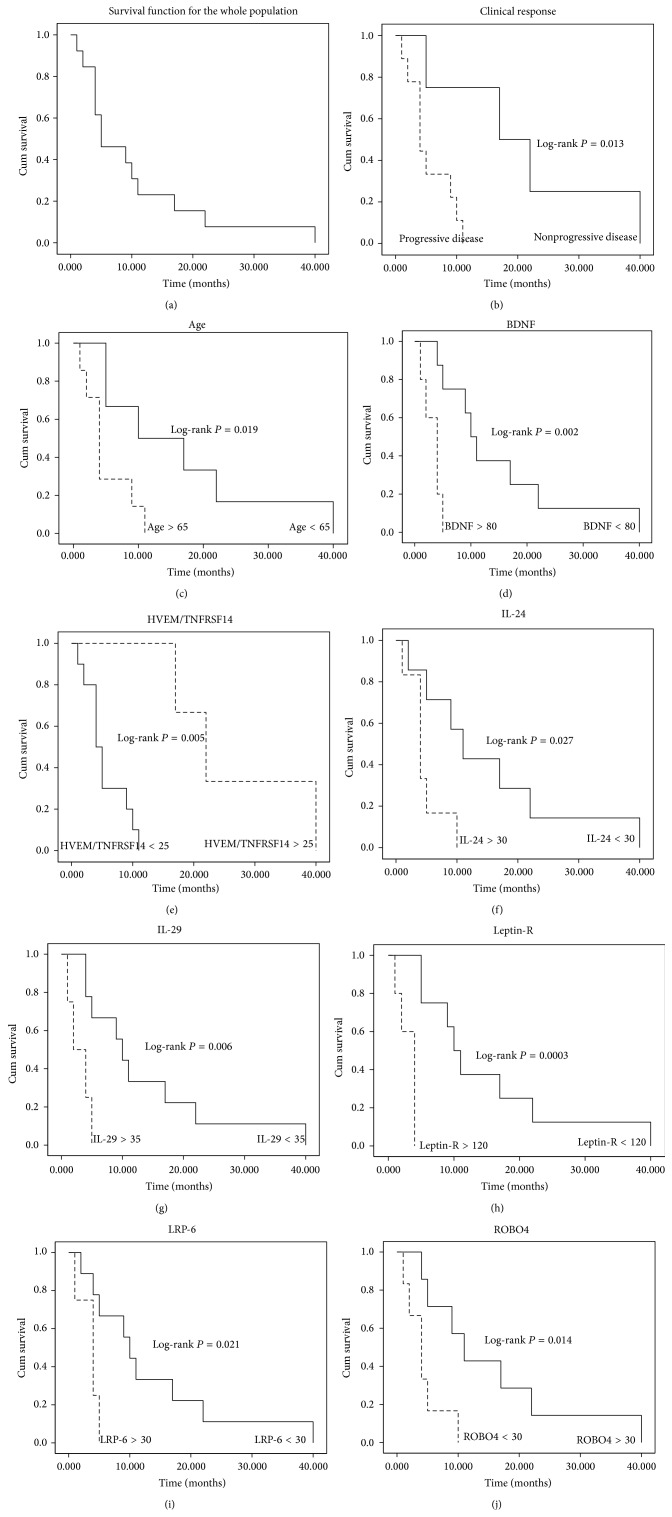Figure 1.
(a) shows Kaplan-Meier disease-specific survival curve for the whole population in the study. The Kaplan-Meier survival curve is defined as the probability of surviving in a given period of time. Each period of time is the interval between two nonsimultaneous terminal events. There were no survival data censored as no information about the survival time of any individual was lost. (b–h) Plots depict Kaplan-Meier survival curves of individual biomarkers tagged as significant prognosis markers: (b) clinical response; (c) age; (d) BDNF; (e) HVEM/TNFRSF14; (f) IL-24; (g) IL-29; (h) leptin-R; (i) LRP-6; and (j) ROBO4. The cut-off values were determined considering those points which maximized the dichotomization between poor and fair prognosis. The P values for the log-rank tests are shown for every variable.

